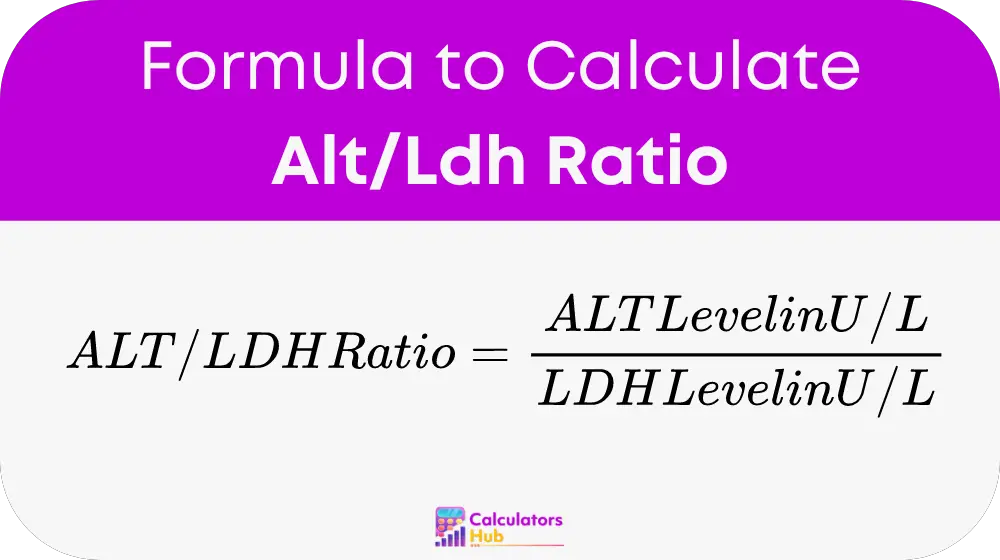The ALT/LDH ratio calculator is a diagnostic tool used primarily by healthcare professionals to assess liver function and detect potential liver damage. The calculator measures the ratio of Alanine Aminotransferase (ALT) to Lactate Dehydrogenase (LDH), two critical enzymes that are indicators of liver health and cellular damage, respectively. A higher or lower than normal ALT/LDH ratio can indicate various conditions, including liver disease, heart issues, or muscle degradation.
Formula of Alt/Ldh Ratio Calculator
To determine the ALT/LDH ratio, the calculation is straightforward:

Where:
- ALT Level in U/L is the Alanine Aminotransferase level in units per liter.
- LDH Level in U/L is the Lactate Dehydrogenase level in units per liter.
This formula helps medical professionals quickly interpret enzyme levels in relation to each other, providing a clearer picture of a patient's health status.
Table for General Terms
| Term | Definition |
|---|---|
| ALT (U/L) | Alanine Aminotransferase level measured in units per liter. |
| LDH (U/L) | Lactate Dehydrogenase level measured in units per liter. |
| Normal ALT Range | 7-56 U/L |
| Normal LDH Range | 140-280 U/L |
This table serves as a quick reference for commonly search terms related to the ALT/LDH ratio. Aiding individuals in understanding their medical tests without needing detailed calculations each time.
Example of Alt/Ldh Ratio Calculator
Consider a patient with an ALT level of 50 U/L and an LDH level of 200 U/L. Using the formula:
ALT/LDH Ratio = 50 / 200 = 0.25
This result can help a healthcare provider assess the relative enzyme activity, which might indicate specific health conditions depending on other clinical findings.
Most Common FAQs
A1: A high ALT/LDH ratio typically indicates liver inflammation or damage, as ALT is primarily found in the liver and increases when liver cells are damaged.
A2: Yes, while primarily indicative of liver health, abnormalities in the ratio can also suggest issues related to muscle damage or heart diseases, depending on the context and accompanying symptoms.
A3: Yes, any abnormal results should be discussed with a healthcare professional who can interpret the results in the broader context of health assessments and diagnostic tests.